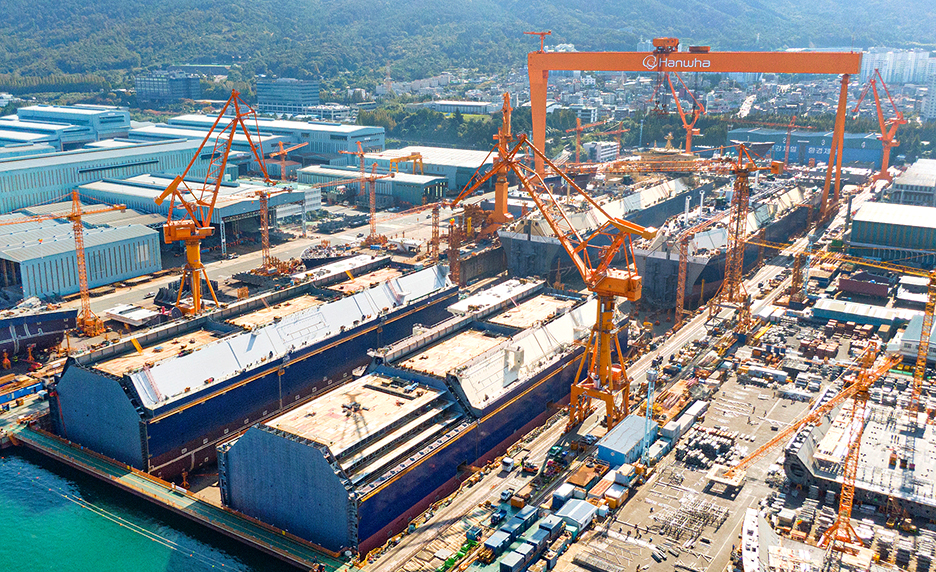South Korean shipbuilder Hanwha Ocean, previously known as DSME, has received an LNG carrier order worth about $920 million as part of QatarEnergy’s massive shipbuilding program.
Hanwha Ocean said on Tuesday it will build four LNG carriers for an Asian shipowner and deliver the vessels by August 2027.
The shipbuilder did not reveal the name of the company behind the order.
However, QatarEnergy announced on Sunday that it has signed time charter agreements for 19 LNG carriers as part of the second phase of the shipbuilding program, saying that four of these 174,000 cbm vessels will be built by Hanwha Ocean.
The four carriers will be owned by a joint venture of Japan’s K Line and South Korea’s Hyundai Glovis.
K Line also said in a separate statement that Hanwha Ocean will deliver these four QatarEnergy X-DF LNG carriers in 2027.
The price of about $230 million per LNG carrier is also in line with the previous orders under the second part of the QatarEnergy program.
It is also much less then the current price of about $265-270 million for 174,000 cbm LNG carriers in South Korea.
12 LNG carriers for Hanwha Ocean
Prior to this, Hanwha Ocean signed a memorandum for 12 LNG carriers tied to QatarEnergy’s shipbuilding program and after that it secured an LNG carrier order worth about $1.84 billion for 8 carriers.
Eight of these vessels will be owned by Qatari LNG shipping giant Nakilat.
QatarEnergy signed time charter agreements on March 24 with Nakilat for 25 conventional-size LNG carriers as part of the second phase of its shipbuilding program.
Seventeen of the 25 LNG vessels are being constructed at the Hyundai Heavy Industries (HHI) shipyards in South Korea, while the remaining eight are being constructed at Hanwha Ocean.
Last year, QatarEnergy signed a deal for 17 LNG carriers worth about $3.9 billion with HD Hyundai Heavy, kicking off the second phase of the shipbuilding program.
QatarEnergy now confirmed orders for 44 vessels for the second phase boosting the total to 104 ships.
The company also said it completed the conventional LNG vessels portion of the program.
LNG Prime recently reported, citing shipbuilding sources, that QatarEnergy has selected shipowners to own and operate 18 Q-Max LNG carriers as part of its massive shipbuilding program.
These giant vessels will be built by China’s Hudong-Zhonghua.

